How to Get to Imsouane: Transport Options in Morocco – Complete 2025 Guide
Planning how to get to Imsouane requires understanding Morocco’s transport infrastructure and choosing the best route to reach this stunning coastal village. Located on Morocco’s Atlantic coast between Agadir and Essaouira, Imsouane may seem remote, but multiple transport options connect this surfing paradise to major Moroccan cities and international airports. Whether you’re traveling from Casablanca, Marrakech, or arriving directly at Agadir Airport, this comprehensive guide covers every aspect of how to get to Imsouane efficiently, safely, and affordably.
Understanding how to get to Imsouane begins with recognizing that this authentic fishing village’s relative isolation is precisely what preserves its charm. The journey itself becomes part of the adventure, offering glimpses of Morocco’s diverse landscapes, from bustling cities to rural Berber villages, from argan forests to dramatic coastlines. Each transport option provides different experiences, costs, and travel times, allowing visitors to choose routes that match their preferences, budgets, and adventure levels.
International Flights: Your Gateway to Morocco
Agadir Al Massira Airport: Closest International Gateway
The most convenient starting point for learning how to get to Imsouane is Agadir Al Massira Airport (AGA), located approximately 80 kilometers north of the village. This modern airport receives direct flights from major European cities including London, Paris, Frankfurt, Madrid, and Amsterdam, making it the preferred entry point for international travelers.
Major airlines serving Agadir include Royal Air Maroc, Ryanair, EasyJet, TUI Airways, and Transavia. Flight frequencies increase during peak seasons (October-April) when European travelers escape winter weather for Morocco’s Atlantic coast. Booking flights 2-3 months in advance typically secures better prices, especially for budget carriers.
The airport offers standard international amenities including car rental desks, currency exchange, ATMs, and taxi services. Free WiFi allows travelers to confirm onward transport arrangements or contact accommodation providers in Imsouane. The airport’s compact size means minimal walking distances and efficient processing times.
Mohammed V International Airport (Casablanca): Major International Hub
Morocco’s busiest airport, located in Casablanca, offers the widest selection of international connections but requires longer overland travel to reach Imsouane. This option suits travelers seeking extensive flight options or combining Imsouane visits with broader Morocco explorations.
Royal Air Maroc’s hub status at Mohammed V provides connections to destinations worldwide, including North America, Africa, and Asia. The airport’s modern terminals offer comprehensive services, though the additional 350-kilometer journey to Imsouane must be factored into travel planning.
Marrakech Menara Airport: Popular Tourist Gateway
Marrakech airport attracts numerous budget airlines and charter flights, making it another viable option for how to get to Imsouane. The 250-kilometer journey from Marrakech crosses the High Atlas Mountains, offering spectacular scenery but requiring more travel time than other options.
This route appeals to travelers planning to explore Morocco’s imperial cities before relaxing in Imsouane’s coastal tranquility. The mountain crossing provides dramatic landscape changes and opportunities to visit traditional Berber villages along the way.
Ground Transportation from Airports
Airport Transfer Services
Understanding how to get to Imsouane from airports involves considering various ground transport options. Many surf camps, hotels, and guesthouses in Imsouane offer airport transfer services, particularly from Agadir Airport. These transfers typically cost 300-600 MAD ($30-60 USD) and take 90-120 minutes depending on traffic and exact destination.
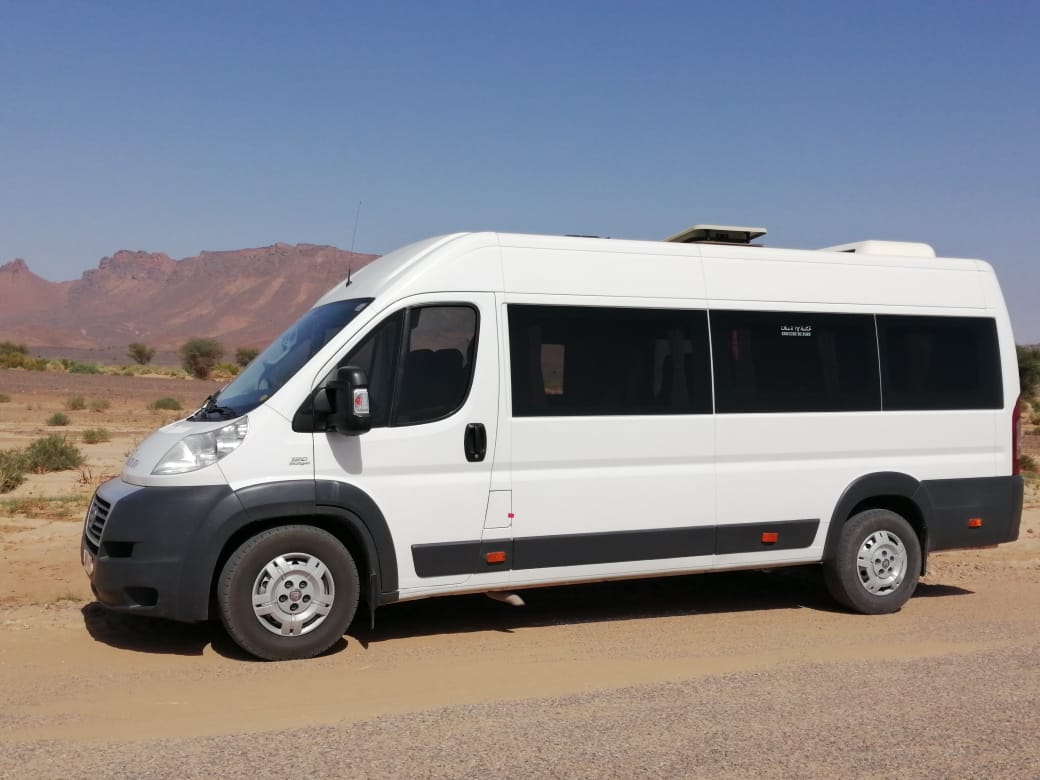
How to Get to Imsouane: Transport Options in Morocco – Complete 2025 Guide
Advance booking ensures availability and often provides better prices than airport taxis. Many transfer services use comfortable minivans or 4WD vehicles suitable for Morocco’s varied road conditions. Drivers often speak multiple languages and provide valuable local information during the journey.
Private transfer services offer door-to-door convenience with flexible scheduling, though costs are higher than shared options. Luxury transfers using premium vehicles cater to travelers seeking maximum comfort, typically costing 800-1200 MAD from Agadir Airport.
Rental Cars: Maximum Flexibility
Car rental represents the most flexible option for how to get to Imsouane, providing freedom to explore surrounding areas and travel at preferred schedules. All major international car rental companies operate at Moroccan airports, including Hertz, Avis, Budget, and Europcar, alongside local operators offering competitive rates.
Rental requirements include valid driving licenses (international permits recommended), credit cards for deposits, and minimum age requirements (typically 21-25 years depending on vehicle categories). Insurance coverage is essential given Morocco’s driving conditions and varying road qualities.
Economy cars suffice for main road travel, though SUVs or 4WD vehicles provide additional comfort and capability for exploring rural areas around Imsouane. Manual transmissions are standard and often significantly cheaper than automatic options.
Overland Routes and Driving Directions
From Agadir Airport to Imsouane
The most direct route for how to get to Imsouane from Agadir follows the coastal N1 highway north for approximately 60 kilometers before turning inland toward the village. This scenic route offers spectacular Atlantic Ocean views while passing through traditional Moroccan countryside.
Key navigation points include passing through Taghazout (famous surf town), continuing north to Tamraght, then following signs toward Imsouane. The final 15 kilometers involve smaller roads winding through hills dotted with argan trees and traditional Berber villages.
Total driving time ranges from 90-120 minutes depending on traffic, road conditions, and driving speeds. The route is generally well-maintained, though some sections feature winding mountain roads requiring careful attention.
From Marrakech to Imsouane
The Marrakech route for how to get to Imsouane crosses the dramatic High Atlas Mountains via the Tizi n’Test pass, one of Morocco’s most spectacular mountain roads. This challenging but rewarding route spans approximately 250 kilometers and takes 4-5 hours under normal conditions.
The journey begins on modern highways leaving Marrakech before ascending mountain roads with numerous switchbacks and dramatic elevation changes. The Tizi n’Test pass reaches over 2,000 meters elevation, offering breathtaking views but requiring careful driving, especially during winter months when snow is possible.
Alternative routes via Chichaoua and the N8 highway provide easier driving conditions but longer distances. This route avoids high mountain passes while still offering beautiful countryside scenery through Morocco’s rural heartland.
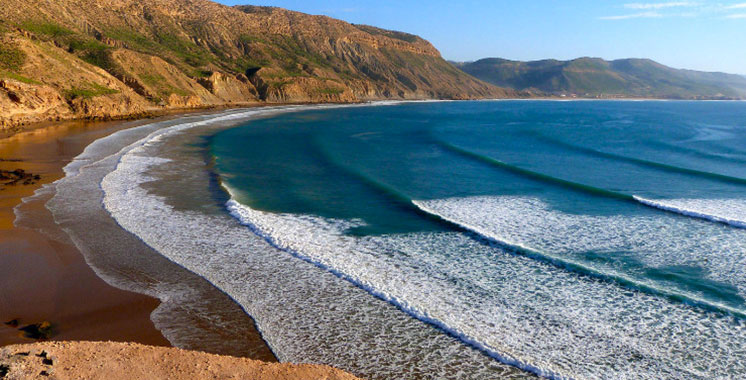
How to Get to Imsouane: Transport Options in Morocco – Complete 2025 Guide
From Casablanca to Imsouane
The longest but most straightforward route for how to get to Imsouane follows Morocco’s excellent highway system from Casablanca south to Agadir, then coastal roads to Imsouane. This 350-kilometer journey takes 4-5 hours via modern highways with minimal challenging sections.
The route passes through Safi and Essaouira, providing opportunities to explore Morocco’s imperial cities and UNESCO World Heritage sites. Many travelers break the journey with overnight stops in Essaouira, combining cultural exploration with coastal relaxation.
Highway tolls are minimal compared to European standards, and service areas provide fuel, refreshments, and rest facilities. The route quality makes it suitable for all vehicle types and driving experience levels.
Public Transportation Options
CTM and Supratours Bus Services
Morocco’s national bus companies provide economical options for how to get to Imsouane, though services don’t reach the village directly. CTM and Supratours operate regular services to Agadir and Essaouira, with connections available to nearby Tamraght or Taghazout.
Bus services offer air conditioning, comfortable seating, and reasonable prices, typically costing 50-150 MAD depending on departure cities and service classes. Advance booking is recommended during peak seasons, particularly for popular routes from Marrakech or Casablanca.
From major cities, buses typically run 2-4 times daily with journey times of 3-6 hours depending on destinations. Luggage allowances accommodate standard travel needs, though surfboard transport may require special arrangements or additional fees.
Grand Taxi Services
Morocco’s shared taxi system, known as “grand taxis,” provides flexible transport for the final segments of how to get to Imsouane. These Mercedes vehicles typically seat 6 passengers and operate on fixed routes between cities and towns.
From Agadir, grand taxis to Taghazout or Tamraght cost 20-30 MAD per person, with connections available to Imsouane for additional 15-25 MAD. Taxis depart when full, so waiting times vary depending on passenger demand and seasonal factors.
Negotiating private grand taxi hire provides door-to-door service at higher costs but greater convenience. Expect to pay 200-400 MAD for private grand taxi services from Agadir to Imsouane, with prices varying based on negotiation skills and seasonal demand.
Local Transport in Imsouane Area
Once understanding how to get to Imsouane successfully, local transport options help explore the surrounding region. The village’s small size means most locations are walkable, though bicycles and motorbikes provide convenient options for reaching nearby beaches or villages.
Several local operators rent bicycles for 50-100 MAD daily, perfect for exploring coastal paths and nearby attractions. Motorbike rentals, requiring valid licenses, cost 150-300 MAD daily and provide access to more distant locations.
Local drivers offer informal taxi services for exploring surrounding areas, visiting markets, or reaching hiking trailheads. These arrangements, typically 100-200 MAD for half-day excursions, provide cultural interaction opportunities while supporting local livelihoods.
Seasonal Considerations for Transportation
High Season Travel (October-April)
Peak season significantly impacts how to get to Imsouane planning, with increased demand for flights, accommodation, and transport services. Advance booking becomes essential for securing preferred travel dates and reasonable prices.
Flight prices to Agadir can double during European winter months as travelers escape cold weather. Car rental availability decreases while prices increase, particularly for popular vehicle categories. Airport transfer services experience higher demand, making advance reservations crucial.
Road conditions remain generally excellent during high season, with minimal weather-related disruptions. However, increased traffic, particularly on weekends, can extend journey times from airports and major cities.
Low Season Considerations (May-September)
Summer months offer advantages for how to get to Imsouane despite higher temperatures. Flight prices decrease significantly, car rentals become more affordable, and accommodation rates drop substantially.
However, summer brings challenges including extreme heat during inland travel, particularly crossing mountain passes. Air conditioning becomes essential for comfort, and early morning or late afternoon travel helps avoid peak temperatures.
Ramadan, which moves through the calendar, can affect transport schedules and service availability. Planning around religious observances ensures smoother travel experiences while demonstrating cultural respect.
Alternative Transport Options
Motorcycle and Scooter Rentals
Adventurous travelers discovering how to get to Imsouane might consider motorcycle rentals for the ultimate freedom and authentic Moroccan road experience. Several Agadir and Marrakech operators rent motorcycles ranging from small scooters to large touring bikes.
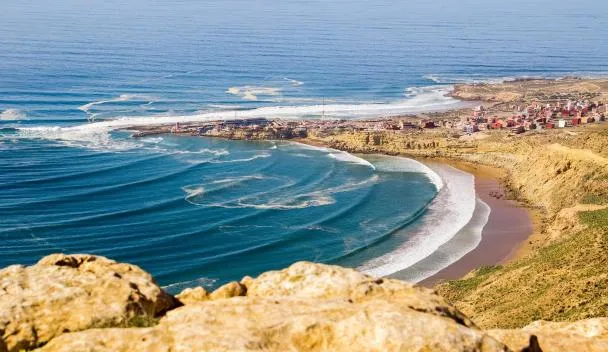
How to Get to Imsouane: Transport Options in Morocco – Complete 2025 Guide
Motorcycle travel requires valid international licenses, appropriate insurance coverage, and excellent safety equipment including helmets and protective clothing. Morocco’s varied road conditions, from modern highways to rural tracks, demand experienced riding skills and constant alertness.
The coastal route from Agadir provides spectacular scenery ideal for motorcycle touring, though mountain routes require advanced skills and suitable equipment. Luggage capacity limitations make motorcycles suitable primarily for minimalist travelers.
Hitchhiking and Backpacker Options
Budget-conscious travelers exploring how to get to Imsouane often consider hitchhiking, which remains relatively common and safe in Morocco when practiced sensibly. Main highways see regular traffic, and Moroccan hospitality often extends to offering rides to foreign travelers.
Successful hitchhiking requires strategic positioning near highway entrances, appropriate dress demonstrating cultural respect, and basic Arabic or French language skills. Safety considerations include traveling in pairs when possible and maintaining communication with accommodation providers.
The coastal route between Agadir and Imsouane sees regular traffic including tourists, locals, and commercial vehicles. However, the final stretch to Imsouane involves smaller roads with less frequent traffic, potentially requiring patience or alternative arrangements.
Luggage and Equipment Transportation
Surfboard Transport Considerations
Many visitors learning how to get to Imsouane bring surfboards to experience the village’s world-class waves. Airlines have varying policies and fees for surfboard transport, typically charging 50-150 euros for board bags meeting size and weight requirements.
Budget airlines often impose strict limitations and higher fees, making board rental in Morocco increasingly attractive. Local surf shops in Imsouane and nearby Taghazout offer quality rental equipment at reasonable daily rates, eliminating transport complications.
Ground transport options vary in surfboard accommodation capabilities. Rental cars require roof racks or larger vehicles, while bus services may refuse oversized luggage. Private transfers can accommodate surfboards with advance notice and possible additional fees.
General Luggage Guidelines
Standard luggage presents minimal challenges for how to get to Imsouane, though certain considerations enhance travel efficiency. Morocco’s varied climate requires diverse clothing, from beach wear to mountain layers, potentially increasing luggage volumes.
Wheeled luggage proves impractical on Imsouane’s unpaved streets and sandy areas, making backpacks or soft luggage more suitable. Many accommodations lack elevators, so heavy luggage can create challenges in multi-story buildings.
Essential items unavailable locally should be packed carefully, though Morocco’s growing tourism infrastructure means most necessities are available in larger nearby towns like Agadir or Essaouira.

How to Get to Imsouane: Best Transport Options & Routes in Morocco 2025
Cost Analysis and Budget Planning
Transportation Budget Breakdown
Understanding how to get to Imsouane financially helps travelers plan appropriate budgets for different transport options. Costs vary dramatically based on choices, seasons, and booking timing.
Budget travelers using public transport and shared services can reach Imsouane from Agadir Airport for 100-200 MAD total, including buses to Tamraght and grand taxis to the village. Mid-range options using private transfers cost 400-600 MAD, while luxury private transport can exceed 1000 MAD.
Car rental provides excellent value for groups or extended stays, with economy vehicles starting around 300 MAD daily including insurance. Fuel costs for Agadir-Imsouane trips typically range 80-120 MAD depending on vehicle efficiency and current prices.
Hidden Costs and Additional Expenses
Planning how to get to Imsouane should account for various additional expenses beyond basic transport fares. Airport parking fees, highway tolls, and fuel costs add to driving expenses, while meal stops and accommodation during long journeys increase total costs.
Travel insurance becomes particularly important given Morocco’s varying road conditions and potential vehicle breakdowns. Medical coverage and evacuation insurance provide peace of mind for remote area travel, though costs remain modest compared to comprehensive coverage benefits.
Currency exchange rates affect international travelers’ real costs, with credit card foreign transaction fees and ATM withdrawal charges adding to total expenses. Carrying some Moroccan dirhams for local transport and small purchases proves practical.
Safety and Practical Considerations
Road Safety and Driving Conditions
Morocco’s road infrastructure varies significantly, affecting how to get to Imsouane safety considerations. Main highways maintain excellent standards with good signage and regular maintenance, while rural roads may feature potholes, unmarked hazards, or livestock.
Driving standards differ from European or North American norms, with more aggressive overtaking, variable speed enforcement, and different traffic flow patterns. Defensive driving approaches and constant alertness help ensure safe journeys.
Night driving presents additional challenges due to limited street lighting, potential animal hazards, and increased accident risks. Planning arrivals during daylight hours, particularly for first-time visitors, enhances safety and reduces navigation difficulties.
Cultural Sensitivity During Travel
Respectful behavior during transport enhances experiences while demonstrating appreciation for Moroccan culture. Learning basic Arabic greetings, understanding Islamic customs, and dressing appropriately create positive interactions with locals.
Ramadan affects transport schedules, restaurant availability, and social rhythms throughout Morocco. Understanding religious observances and adjusting travel plans accordingly shows cultural respect while avoiding potential complications.
Photography restrictions exist around certain government buildings, military installations, and some religious sites. Asking permission before photographing people, particularly women, demonstrates cultural sensitivity and often leads to more authentic interactions.
Technology and Navigation Tools
GPS and Mapping Applications
Modern technology significantly simplifies how to get to Imsouane navigation, though offline capabilities remain essential given variable mobile coverage in rural areas. Google Maps, Maps.me, and other applications provide reliable routing and points of interest information.
Downloading offline maps before departure ensures navigation capability without mobile data, particularly important during mountain crossings or rural road sections. GPS coordinates for Imsouane (30.8167°N, 9.8167°W) provide backup navigation reference points.
Local SIM cards or international roaming plans enable real-time navigation and communication, though costs vary significantly. Major Moroccan operators including Maroc Telecom, Orange, and Inwi offer tourist packages with data allowances suitable for navigation and communication needs.
Communication and Emergency Contacts
Maintaining communication capabilities enhances safety during how to get to Imsouane journeys, particularly when traveling alone or using unfamiliar routes. Emergency contact numbers including police (19), medical services (15), and tourist police (0524-30-46-01) should be readily accessible.
Accommodation providers in Imsouane typically provide local contact information and can assist with transport arrangements or emergency situations. Surf camps and guesthouses often coordinate airport transfers and can provide routing advice for self-driving visitors.
Travel insurance providers typically offer 24-hour emergency hotlines for medical emergencies, vehicle breakdowns, or other travel complications. Carrying insurance documentation and contact information provides essential backup during unexpected situations.
Conclusion: Your Journey to Paradise Begins
Mastering how to get to Imsouane opens doors to one of Morocco’s most authentic and spectacular coastal destinations. Whether choosing budget-friendly public transport, convenient private transfers, or adventurous self-driving options, each route offers unique perspectives on Morocco’s diverse landscapes and cultures.
The key to successful how to get to Imsouane planning lies in matching transport choices to personal preferences, budgets, and travel styles. Budget travelers can reach this coastal paradise economically using public transport combinations, while those seeking convenience can enjoy door-to-door private services. Adventure enthusiasts may prefer self-driving to explore Morocco’s stunning countryside at their own pace.
Remember that the journey to Imsouane represents part of the authentic Morocco experience. Rural roads wind through traditional Berber villages, mountain passes reveal spectacular vistas, and coastal routes showcase Morocco’s dramatic Atlantic coastline. Embracing these travel experiences enhances appreciation for Imsouane’s remote beauty and cultural authenticity.
Successful navigation of how to get to Imsouane requires patience, flexibility, and openness to unexpected experiences that often become trip highlights. Morocco’s renowned hospitality extends to helping lost travelers, mechanical problems, or language barriers that transform potential frustrations into meaningful cultural exchanges.
Pack appropriate documentation, maintain flexible schedules, and approach the journey with adventurous spirits. Understanding how to get to Imsouane properly ensures safe, efficient, and memorable travels to Morocco’s hidden surf paradise, where world-class waves, authentic culture, and stunning natural beauty reward those who make the journey.
Your adventure begins the moment you start planning how to get to Imsouane. This comprehensive guide provides the knowledge needed to choose optimal transport options, navigate Morocco’s varied landscapes, and arrive safely at one of the world’s most extraordinary coastal destinations.
External Resources:
- Royal Air Maroc Official Website
- Morocco National Office of Railways (ONCF)
- CTM Bus Company
- Morocco Ministry of Transport
- Agadir Airport Official Information
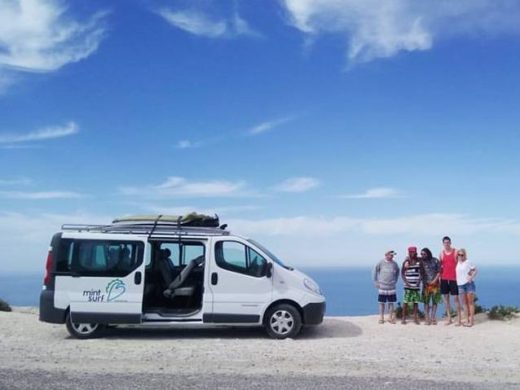
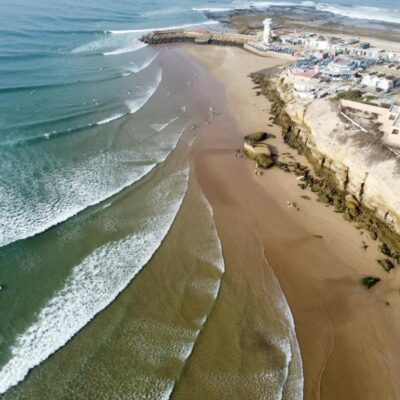
Comments